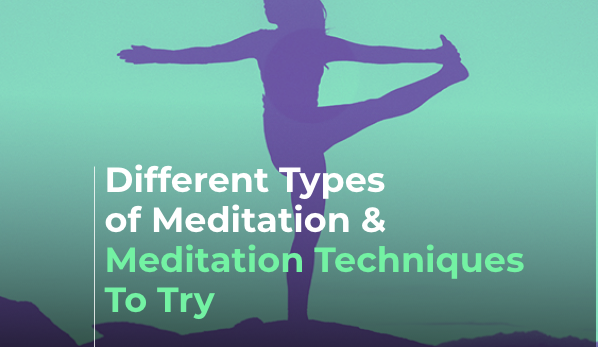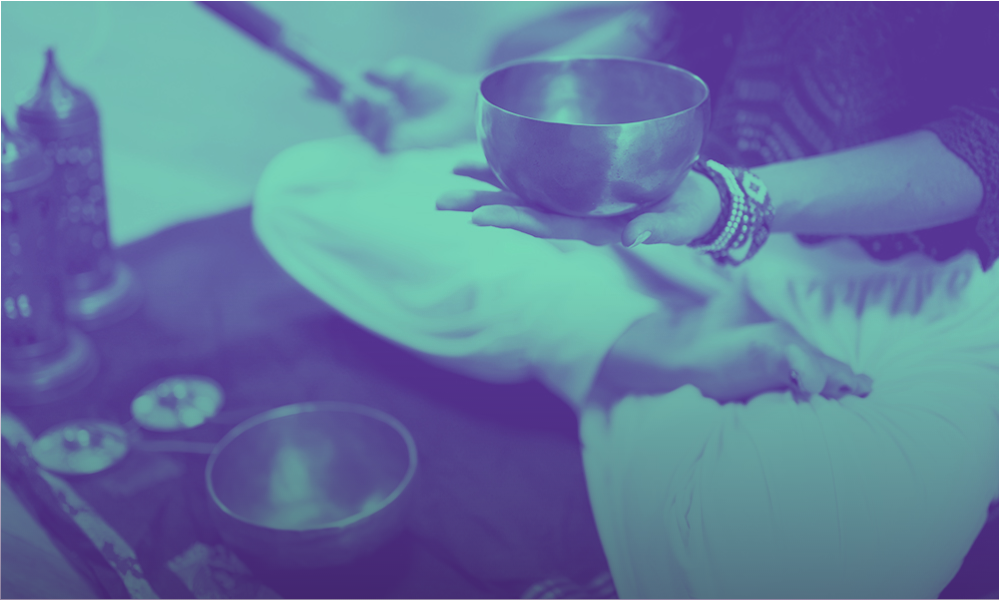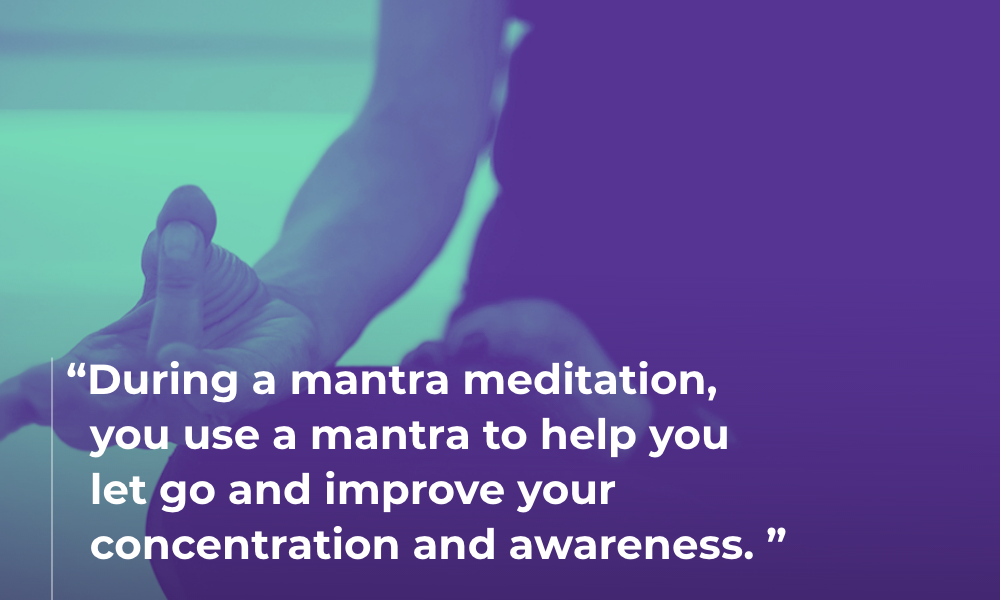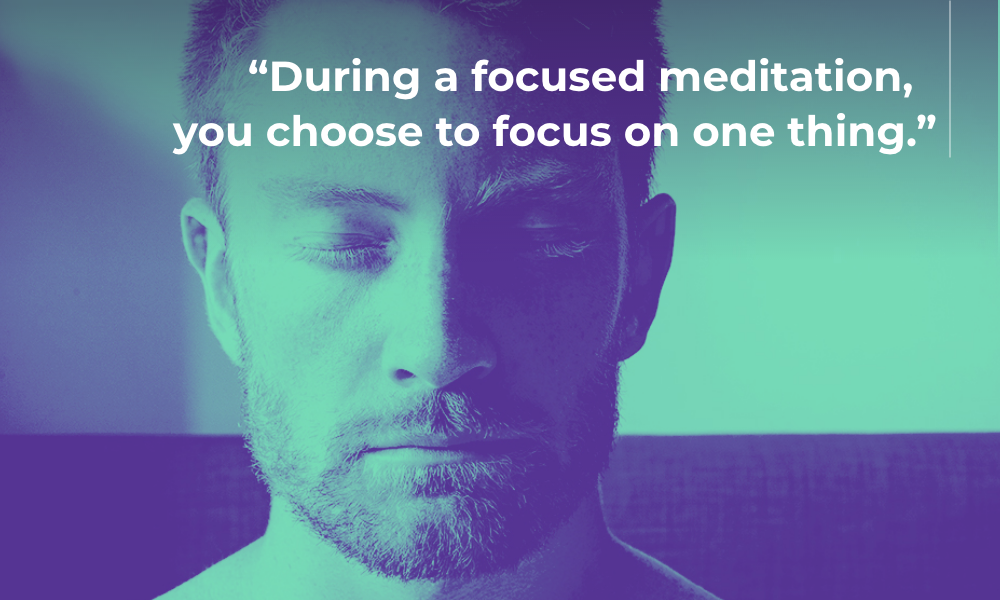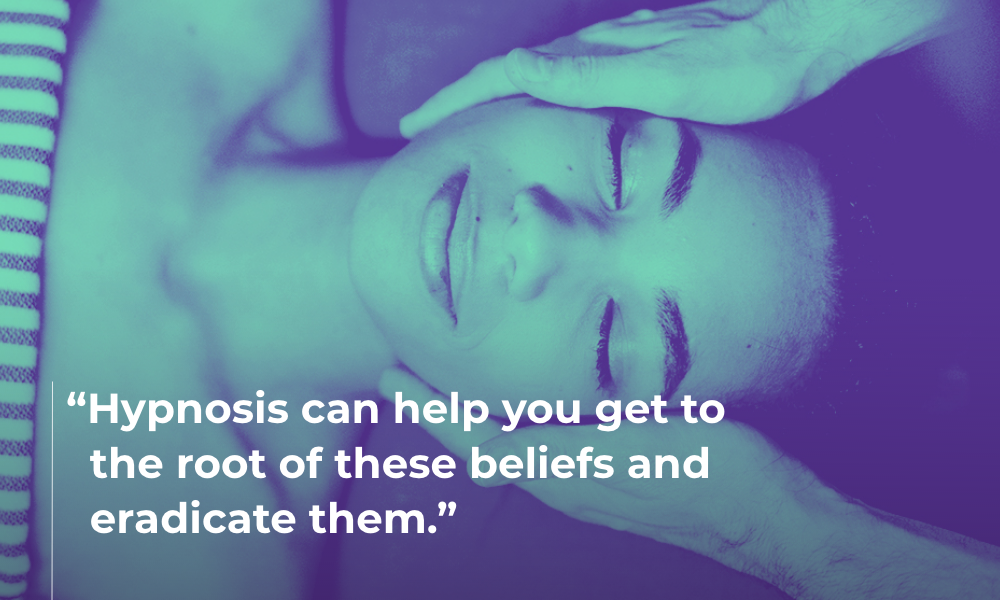You probably already know that meditation has a whole host of benefits. It can lower your blood pressure, reduce your stress and anxiety, and provide you with a greater capacity for living in the moment, just to name a few. But did you know that there are lots of ways to practice meditation? It’s true; there are many different types of meditation other than simply sitting with your thoughts. Although it’s good to stick with one meditation technique long enough to see its benefits, it’s totally okay—and even encouraged—to switch it up once in a while!
If you’re looking to spice up your meditation routine and try something new, we’ve got you covered. In this blog, we explore 25 popular types of meditation. (That’s right: you could explore a new meditation style every month for over two years!) We also cover some reasons why you should start a meditation practice in the first place. Let’s dive in.
What are the Benefits of Meditation?
If you’re new to meditation, you may wonder why people do it. The reality is that each person’s reason for meditating is as unique as they are.
Some people use it to find a sense of peace and calm, while others use it to reclaim and sustain their energy amid a busy day.
Other meditators find that a morning meditation session helps them stay alert throughout their workday. Meanwhile, others use meditation to wind down the night. And others still note that it helps their creative process.
Whatever your reason for meditating, you’ll find that it tremendously improves your overall sense of well-being, your mental health, and your ability to live in the present moment. It happens to have a lot of other researched benefits too. These include (but certainly aren’t limited to):
- A reduction in the inflammatory response caused by stress
- An improved ability to focus
- A reduction in chronic pain
- A greater ability to fight addiction
- A reduction in anxiety
- An improvement in memory
If you’re ready to experience these benefits, it’s time to try meditation. We’ll discuss 25 different types of meditation, so you can choose what works best for you. And regardless of which meditation technique you try, remember to always use good meditation posture.
The Different Types of Meditation
There are many different types of meditation. Different ones come from different cultures around the world. It’s hard to pin down exactly where meditation started, but historians believe that people began practicing meditation in India as early as 5,000 to 3,500 BCE.
Some types of meditation are very similar to one another, with only subtle differences. In contrast, other forms of meditation, like candle-gazing, are very unique. No one form of meditation is better than another, and you don’t need to commit to one type forever.
While we encourage you to stick with one meditative practice for a while to get the most out of it, we also encourage you to experiment as you see fit. Explore and see which meditation style works best for you in each season of your life.
1. Sound Bath
A sound bath is a type of meditation where you hear sound-making instruments like gongs, chimes, and singing bowls (often Tibetan or crystal). The sound vibrations are meant to center you. Some people also believe that a sound bath can invite you into a deeper state of consciousness.
As the name implies, a sound bath makes you feel as though you are “bathing” in the sound—it’s an immersive experience. Sound baths are safe for most people and won’t damage your hearing. Although, it’s important to note that those who are startled or bothered by unfamiliar noises may choose not to participate.
Though you can do a sound bath by yourself at home, it requires some training and instruments. So for your first sound bath meditation, we recommend finding a sound bath class. This will help guide you with instructions on how to relax and tune into the sound.
2. Mindfulness
Mindfulness meditation is a broad category of meditation that encompasses many of the other kinds of meditation you’ll encounter on this list, like focused meditation and body scan meditation. The aim of a mindfulness meditation is to fully immerse yourself in the present moment.
This is a very popular type of meditation. Beginners practice this type of meditation a lot, and it’s safe to say that a majority of seasoned meditation practitioners also choose mindfulness meditation. If you’d like to practice a mindfulness meditation, here’s a simple way to do so:
- Sit comfortably with a straight spine.
- Become aware of your breath.
- Sit with your breath. As thoughts arise, return your focus back to your breath.
3. Vipassana
Vipassana means “to see things as they really are.” It’s a type of traditional Buddhist meditation, and it’s often thought that it was taught by the Buddha himself. During Vipassana meditation, you observe your inner self without judgment. Vipassana is similar to mindfulness meditation, but it’s slightly different. With Vipassana, the focus is specifically on the connection between our minds, bodies, and the true nature of reality.
This type of meditation is especially great to help relieve stress and anxiety. It’s recommended for anyone who feels anxious and tense or struggles to live in the moment.
To do a Vipassana meditation:
- Sit comfortably with your spine straight.
- Direct your attention to your breath.
- Observe thoughts and feelings as they arise.
- Direct your attention toward the world around you, then direct your attention to your inner being. Feel how these things are connected.
4. Qigong
Qigong—translated as “the master of one’s energy—is a Chinese meditation practice that focuses on moving energy throughout your body to help it operate well and heal. Qigong can also include sending energy outward to help other people heal.
Qigong combines breathing, meditation, and—in some cases—movement. Because it’s designed for healing, this is an excellent meditation for anyone who’s struggling with health issues to use as a supplement to treatments provided by their doctor. However, we do not suggest practicing Qigong as a replacement for seeking professional medical care.
To do a passive (non-moving) Qigong meditation:
- Sit in a comfortable position with your spine elongated.
- Draw your attention to your breath.
- Then, focus directing your positive energy and light to the part of your body that needs healing.
5. Zen
Zen meditation is an ancient Buddhist practice. It focuses on observing the breath and building awareness; its goal is to bring deep understanding about life. The aim is to reach this understanding through general awareness, rather than through words.
One of the most popular and longest-practiced types of meditation, zen meditation is ideal for just about anyone. When you practice zen meditation, you’re meditating to increase your general awareness, rather than focusing on one thing (like your breath).
To do a zen meditation:
- Begin by sitting comfortably and elongating your spine.
- Draw your attention to your breath, then slowly widen your awareness to your surroundings.
- When thoughts or emotions come up, simply note them and then return to cultivating awareness in yourself and around you.
6. Breathing
A breathing meditation (which is a type of mindfulness meditation) is excellent for centering you in the present moment. It can also help reduce anxiety and stress. It’s great for all types of meditators, especially those who are new to the practice (because it’s so simple and accessible).
Here’s how to do a breathing meditation:
- Sit in a comfortable position with your spine straight.
- Tune into your breath.
- As thoughts arise, return your focus back to your breathing.
There are many different types of breathing you can do while meditating. You can simply breathe naturally, or you can count each breath until 10 and then start over. Or you can follow a box breathing technique.
To do box breathing, breathe in for a count of four, hold your breath for a count of four, exhale for a count of four, and then hold for a count of four before inhaling again. You’ll likely find that this creates a nearly instant feeling of relaxation in your body, and then subsequently, your mind.
7. Mantra
A mantra (also called a mantram) is a word or phrase you repeat. Mantra comes from two Sanskrit words: manas meaning mind, and tra meaning transportation tool. Eknath Easwaran, renowned meditation teacher and author of “The Mantram Handbook”, says this about the healing power of mantras:
“The effect of the mantram is cumulative: constant repetition, constant practice, is required for the mantram to take root in our consciousness and gradually transform it, just as constant repetition makes the advertiser’s jingle stick in our minds.”
During a mantra meditation, you use a mantra to help you let go and improve your concentration and awareness. Those who like positive affirmations may find mantra meditations especially enjoyable.
To do a mantra meditation:
- Choose your mantra prior to your meditation.
- Sit in a comfortable position with your spine straight.
- Begin by drawing your attention to your breath.
- Begin to repeat your mantra to yourself. You can mentally or outwardly chant.
- As distracting thoughts arise, simply acknowledge them and return to your mantra.
8. Body Scan
A body scan meditation involves bringing attention to each part of your body in turn. You may also want to focus on relaxing each part of the body after you bring awareness to it, like you would in a progressive relaxation meditation. This is an excellent, grounding meditation to do when you’re feeling anxious or disconnected from your body.
To do a body scan meditation:
- Begin by sitting in a comfortable position.
- Draw awareness to your breath.
- Then draw attention to the top of your head, then your forehead, then your eyes, all the way down to the soles of your feet. (Or, if you prefer, you can start at the soles of your feet and work your way up.)
- Note any sensations you feel without judgment.
- When your mind wanders, bring your thoughts back to whatever body part you were focusing on and continue your scan.
9. Visualization
A visualization meditation uses guided imagery to help you relax your mind and body. This type of meditation is especially beneficial for anxious people who don’t feel comfortable sitting alone with their thoughts yet.
We recommend using a guided meditation app to lead you through your visualization meditation.
To do a guided visualization meditation:
- Begin by sitting with your spine erect.
- Draw your attention to your breath.
- Relax and follow the guided imagery provided.
- When distracting thoughts arise, acknowledge them and return your focus to your imagery.
10. Loving Kindness (Metta)
A loving-kindness meditation—also called a metta meditation—is all about sending good energy to yourself and to others.
This type of meditation has a host of health benefits, and generally increases your sense of well-being. This is an excellent meditation to do anytime, but especially when you feel resentment, hostility, envy, or a similar emotion.
To do a loving-kindness meditation:
- Begin by sitting in a comfortable position with good posture.
- Start by envisioning feelings of gratitude and unconditional love for yourself. If it’s difficult to send love to yourself, you may try envisioning yourself as a child. Then send love to the child version of you.
- Once you’ve sent yourself enough love, extend those feelings outward toward others (including the people you may not initially want to send them to).
Over time, you may be pleasantly surprised by how loving-kindness meditation changes both your relationship with yourself and those you interact with.
11. Spiritual
Spiritual meditation is the practice of using meditation to connect to your higher power; whatever that may be. Spiritual meditation is not exclusive to one religion or faith.
A primary goal of spiritual meditation is to remember that we are connected to everything around us, so it’s an excellent practice for anyone feeling disconnected or isolated. You can achieve spiritual meditation through mindfulness meditation, visualizations, and more. When you’re practicing a spiritual meditation, shift your focus to letting go of limiting beliefs and tuning into our universal connectedness.
12. Movement
As the name implies, a movement meditation is one you do while moving. The type of movement, of course, is up to you. It might mean practicing a walking meditation, enjoying a dancing meditation, practicing tai chi (to name just a few options).
Movement meditation is excellent for people who have trouble staying focused (or awake) while seated or lying down. It may also appeal to you more than a seated meditation if you already sit all day for work or school.
To do a movement meditation, avoid using any distractions like a phone or music while you move. Instead, tune into your breath. Then focus on each movement you make and the sensations it invokes in your body.
13. Progressive Relaxation
A progressive relaxation meditation is excellent for creating stress reduction. It can even help with coming out of an anxiety or panic attack. It’s a good type of meditation to do after or during a difficult exam, an argument with a loved one, or any other experience that makes your muscles tense out of anger, fear, or excitement.
Here’s how to do a progressive muscle relaxation meditation:
Begin by relaxing your forehead, then your jaw, working all the day down your body (or if you prefer, you can go in reverse, from your feet to your head).
As you begin to relax your body, your mind will follow suit.
14. Focused
During a focused meditation, you choose to focus on one thing—like your breath—to help ground you in the present moment. This is a great daily meditation for anyone who wants to be more mindful and enjoy a general sense of calm and well-being.
To do a focused meditation:
Sit comfortably with an elongated spine.
Draw your attention to your chosen focus (for example, your breath).
Keep all of your attention on your focus point. When your thoughts wander, simply acknowledge them and return to your breath.
15. Chanting
A chanting meditation is a great option for anyone who loves to make noise. This might include musicians, those who love to sing, or those who learn best audibly. During a chanting meditation, you chant or sing mantras, songs, or other phrases. The goal is to help center both your mind and body in the present moment.
To do a chanting meditation, you can either repeat a meaningful mantra or phrase to yourself at home, or join a chanting meditation group. We recommend doing the latter the first few times, to experience the energizing and unifying energy of group chanting!
16. Chakra
A chakra meditation is designed to unblock (or keep open) your core chakras.
Chakras (which means “wheels” in Sanskrit) are defined as energy centers in your body. The concept is seen in some religions, like
Buddhism and Hinduism, and they are thought to manipulate the flow of life force energy. When they are blocked, it’s believed to cause mental, physical, or emotional issues. You may want to try a chakra meditation if you’re feeling out of balance physically, mentally, or emotionally. (Though it’s important to note that if you’re feeling ill, you should always consult with a medical professional.)
To do a chakra meditation, you must first be aware of the seven primary chakras, where they’re located, and the colors associated with them:
| Chakra Name | Chakra Locations | Chakra Color |
| Root Chakra (Muladhara) | Base of the Spine | Red/Brown |
| Sacral Chakra (Swadhisthana) | Lower Abdomen | Orange |
| Solar Plexus Chakra (Manipura) | Upper Abdomen (Above Belly Button) | Yellow |
| Heart Chakra (Anahata) | Center of the Chest (Between Pectoral Muscles) | Green |
| Throat Chakra (Vishuddha) | Throat | Blue |
| Third Eye Chakra (Ajna) | Between the Eyes | Indigo |
| Crown Chakra (Sahasrara) | Top of the Head | White/Violet |
- Sit comfortably on the floor (with a cushion) or on a chair with your spine elongated.
- Practice progressive muscle relaxation by tuning into each part of your body—from head to toe—and then relaxing it.
- Draw your attention to your breath, focusing all of your attention on each inhale, and then each exhale.
- Then, shift your attention to your root chakra. Imagine a red/brown orb sitting at the base of your spine. As you inhale, breathe energy into the chakra, encouraging it to spin and enlarge (remember, the chakras are wheels—they are supposed to spin).
- Once you feel you’ve sent enough life force energy to your root chakra, move to the next chakra and repeat the same thing with that chakra’s color. Keep going until you finish with your crown chakra.
17. Self-Inquiry
Self-inquiry is a unique type of meditation that aims to answer the question: “Who am I?” It’s a way to try to understand your essential nature and let go of limiting self-beliefs.
Although anyone can practice self-inquiry meditation, it’s best to try after experiencing more “simple” forms of meditation, like breathing or body scan meditation.
To do a self-inquiry meditation practice:
- Begin a self-inquiry meditation as you would a mindfulness meditation or zen meditation: simply sit and focus on your breath or just exist and take in your surroundings.
Then start to ask yourself questions like: Who am I? Who is thinking this thought?
As strange as this may sound, try not to focus on consciously answering these questions. Instead, allow them to sit in your awareness and see what comes up without any effort from your thinking brain.
18. Guided
A guided meditation is a type of meditation led by a meditation teacher or a meditation app. Guided meditations can take many forms, such as focused or visualization meditations.
Because they typically include reminders to return to your breath, guided meditations are excellent for beginners. They help you stay focused and on track with your meditation practice. Many people also feel more supported and uplifted in their meditation practice when they have a knowledgeable, calm, and supportive guide along the way.
19. Present Moment
The goal of a present moment meditation is, of course, to anchor yourself in the present moment.
This type of meditation is recommended for those who want to slow down, reduce stress and anxiety, and be more present and aware in their day-to-day lives.
To do a present moment meditation:
- Begin by sitting in a comfortable position with an elongated spine.
- Draw your attention to your breath.
- Then, shift your attention to the sounds in the room (first the loudest ones, then the quiet ones).
- After that, draw your attention to any physical sensations you may be feeling in your body.
- Note any thoughts that arise, then return to whatever sensation you’re focusing on.
- Finish by returning your attention to your breath.
20. Trataka (Candle-Gazing)
Trataka meditation is a special type of meditation. During trataka,you gaze at a specific object, most commonly a candle flame. If you’ve been practicing a typical mindfulness meditation for a while and are interested in trying something new, this is a great one to check out!
To do this type of meditation:
- Begin in a comfortable posture in a dark room, then light a candle a couple of feet in front of you.
- After drawing your attention to your breath, rest your gaze just above the wick.
- When distracting thoughts arise, simply acknowledge them, then return your attention to the flame.
21. Taoist
Much like Qigong and chakra meditations, a Taoist meditation focuses on energy. However, the goal of a Taoist meditation is to provide you with tranquility and clarity.
To do a Taoist meditation:
- Sit in a comfortable position with your back elongated.
- Envision a healing ball of energy in your body and direct all of your attention to it.
- When distracting thoughts arise, simply note them and then return to your visualization.
- Taoist meditation is a great choice for anyone who wants to work on aligning their body and spirit.
22. Reflection
To do a reflection meditation, select a question or concept to contemplate while meditating. This is a great practice for anyone who wants to strengthen the focus and depth of their thinking.
Here’s how to try a reflection meditation:
- Begin by sitting comfortably with your spine erect.
- Draw your attention to your breath.
- Hold your chosen question in your mind and observe the thoughts that arise.
This is different than consciously searching for a solution to the question. If you don’t understand the difference between those two concepts right now, that’s okay. Understanding will come with practice and time.
23. Transcendental
Transcendental meditation, loved by many celebrities and people of influence, is a specific type of meditation taught by Maharishi Foundation USA, Inc. It’s a type of meditation that’s taught one on one and personalized to each practitioner, with the goal to help meditators transcend the physical realm of awareness. Transcendental meditation uses mantras, which we’ll discuss next. To learn more, visit their website.
24. Kundalini
Calling all yogis! Kundalini meditation—which is a part of kundalini yoga—is designed to facilitate the movement of energy through your body.
This is a great option for anyone whose energy feels stagnant or who would like a more physically active practice than a sitting meditation. If you’re new to kundalini meditation, it’s best to seek out a kundalini yoga class near you.
25. Hypnosis
Did this one surprise you? Hypnosis is, in fact, a type of meditation. We define it as meditation with a goal.
In other words, if practices like mindfulness meditation are passive and focused on releasing all of your thoughts, hypnosis is active and focused on diving deep into your thoughts. Its goal is to expose your subconscious so that you can identify the root causes of your behaviors and, ultimately, change them. For this reason, hypnosis makes an excellent complement to a traditional meditation practice!
If you’d like to give hypnosis a try, we recommend Primed Mind.
Using Guided Meditations to Explore Different Types of Meditation
If you’re new to meditation and are having trouble maintaining a daily meditation practice, but you don’t want to join a meditation course or meditation program, try using an app. A guided meditation app is also a good choice if you want a reliable way to meditate from the comfort of your home (or wherever you happen to be).
Guided meditation apps lead you through several different types of meditation and take the guesswork out of whether you’re doing it “correctly.” They also help you stay on track when your thoughts inevitably wander.
Primed Mind is a guided meditation app that allows you to tap into powerful areas of your mind. Most sessions last between 5 and 20 minutes, making them easy to incorporate into your existing wellness routine. They’re based around primers created by one of the world’s leading mindset coaches, and they include meditations techniques like:
- Breathwork
- Visualization
- Mindfulness
Get started exploring different types of meditation with Primed Mind today. With so many sessions to choose from, you’re sure to find the perfect primer to help you feel full of inner peace and ready to tackle your goals.

